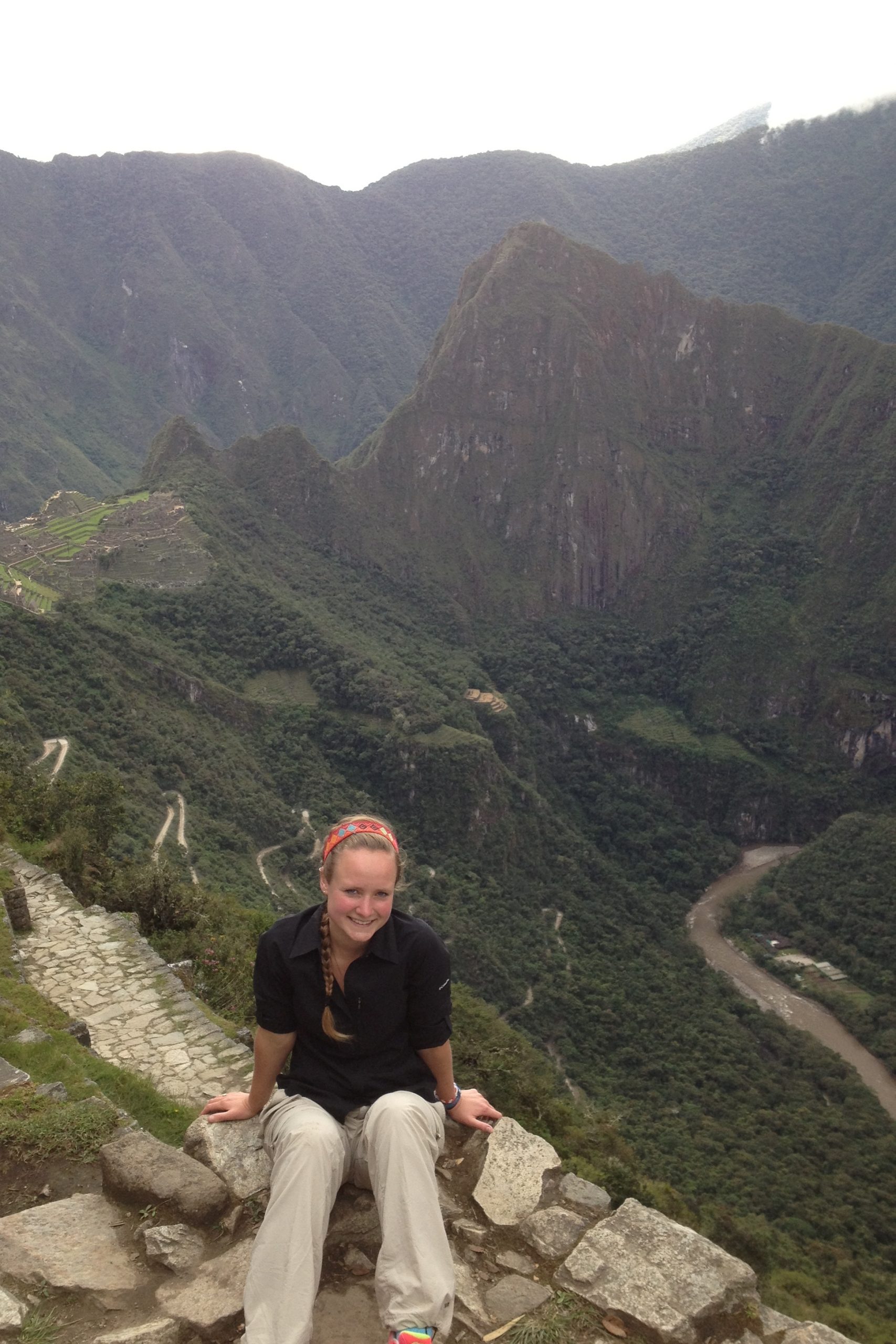
Rachel Ramey has traveled across the globe while pursuing an education at The University of Alabama. Ramey visited Machu Picchu in Peru while on a trip with Student Engineers in Action in 2013.
Visitors have not always been kind to Peru’s Maijuna tribe. Situated on northeastern Peru’s Yanayacu River, the ancient tribal land is rich in natural resources, even though about 400 of its natives live in extreme poverty.
Like other outsiders to the tribe, Rachel Ramey was regarded somewhat suspiciously when she arrived. A member of Student Engineers in Action, formerly Engineers without Borders, Ramey made the first of two trips with a group of engineering students from The University of Alabama in the summer of 2013 to improve sanitation in a Maijuna village.
“We were foreigners; we looked different, came from a different place, and arrived in the villages for a week only to leave after completing a project,” said Ramey, a senior from Dayton, Ohio, studying civil engineering while working on a master’s in business administration at UA.
Luckily, Ramey had an ace up her sleeve that many of her traveling companions did not. She spoke Spanish and could communicate with the villagers. Ramey began learning Spanish at an early age. She spoke enough that, in high school, she was invited along to act as a translator for several volunteer trips in Mexico.
Since then, she has made two trips to the Peruvian Amazon to work on water sanitation projects and completed an internship in the Amazon with an environmental conservation-nongovernmental organization as well as studied abroad in Colombia during her junior year. This past summer, she also traveled to India for three weeks with a group from UA’s STEM Path to the MBA program to study entrepreneurial solutions for poverty-stricken areas.

Her work abroad has earned her a prestigious, nationally competitive Boren Scholarship to study Portuguese and natural resource management at Universidade Federal de Santa Catarina in Brazil. The Boren Scholarship is part of an initiative of the National Security Education Program that provides funding opportunities for undergraduate students from the United States to study less commonly taught languages in world regions critical to U.S. interests. The scholarship is a major federal initiative to build a broader and more qualified pool of U.S. citizens with foreign language and international skills. In exchange for funding, Borenaward recipients agree to work in the federal government for a period of at least one year.
She is the first engineering or computer science student at UA to be awarded this language-focused scholarship.
“I’ve never seen (engineering and language) as two separate studies,” Ramey said. “Engineering is an international discipline that allows for people from all over the world to work together.”
Ramey said her time volunteering with the Maijuna tribe was the most eye-opening experience abroad.
During the first trip, Ramey’s group worked on water testing, installing solar panels in a newly constructed community building and designing a communal composting toilet. She was surprised at how untrusting the villagers were of their efforts.
“Other groups had been to the villages, and one even installed water filters in several homes,” she said. “But the community didn’t buy into the effort, perhaps not understanding the benefits, or choosing not to use them. I learned the importance of listening to local people wherever you do a project and the importance of flexibility to change plans for unforeseeable situations. You have to treat them as the adults they are and build personal relationships first before any change you suggest can begin to happen.”
“I’ve never seen (engineering and language) as two separate studies. Engineering is an international discipline that allows for people from all over the world to work together.”
– Rachel Ramey
Ramey established a level of trust with the villagers by returning with Student Engineers in Action the following summer. She and the other students were able to garner community support for the group’s project. Because many of the Maijuna natives build their own homes, they were able to use their construction experience to help the students quickly construct the composting toilet designed the previous summer.
After the students in Ramey’s group left, she stayed to complete her internship with a local nongovernmental organization, an experience that allowed her to work with volunteers who were more immersed in the Maijuna community.
While engineering and language study may initially seem like unrelated fields, understanding both disciplines was a key part of helping Ramey get to know the members of the tribe. As a part of the University’s STEM Path to the MBA program offered through the Culverhouse College of Commerce, Ramey hopes to use her knowledge of business to improve natural-resource access and management in developing countries. After working with the Maijuna, she is particularly interested in working in South America. By learning Portuguese, a language commonly spoken throughout South America, she will be prepared to work across the continent’s international borders.
“Although English is spoken worldwide, an understanding of other languages and cultures is imperative to working in teams with people from all over the world,” she said.